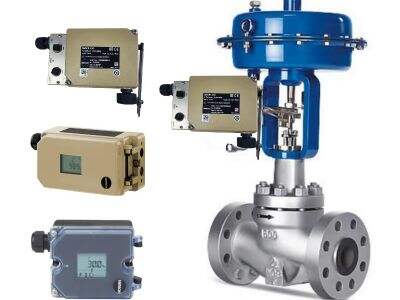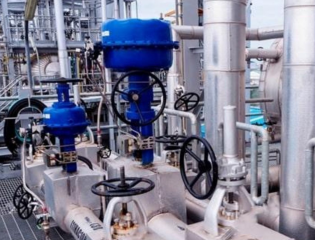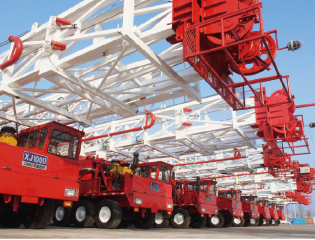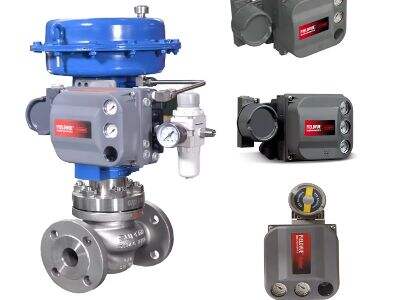How to Fix the Hysteresis and Deadband In Fish Valve Positioner
Fisher Valve Positioners Fisher valve positioner products maintain the adjustment made on a valve and help provide accurate flow of gas or vapor to the burner. But with such performance, come challenges – problems like hysteresis and Deadband that can indirectly affect these valve positioners in a way that would make it inefficient to the point of downtime. In this article, we’ll discuss some tips, expert insights and ultimate solutions for troubleshooting hysteresis and Deadband in Fisher valve positioners. Stop those redundant spares quotes from coming in! Instead it seems to only add up time you won’t step foot into your plant anytime soon
Fisher Valve Positioner Hysterisis and Deadband Solutions
Bounce in a Fisher valve positioner means difference in output when input is increasing versus decreasing - WHY? This can result in incorrect valve positions, which may disrupt the process control. On the other hand, Deadband is the input signal range over which the valve does not move thereby generating time lags in response times and possibly inducing system oscillations. Diagnosis and resolution of these problems impact the performance and reliability of Fisher valve positioners

How to Eliminate Hysteresis and Deadband in Fisher Valve Positioners
Calibration: Routine calibration of the valve positioner may reduce the hysteresis and Deadband effect. Verify that the input signals match precisely the desired valve positions to minimize any discrepancy in the system
Check: Visually inspect your valve's positioner, checking it for wear-and-tear or mechanical failures that could serve as the source of hysteresis and Deadband. Replace any worn components to maintain peak performance
Calibration: Optimize the valve positioner parameters to minimize hysteresis and Deadband. Try different settings to get the best fit for your work-process needs
Hysteresis and Deadband in Fisher Valve Positioners: Pro Tips for Resolution
Note that consultation with industry professionals can provide assistance in troubleshooting hysteresis and Deadband in Fisher valve positioners
A quick overview of Fisher-style valve positioner Hysteresis and Deadband troubleshooting techniques
Software Upgrades – make sure the valve positioner software is current – old or mismatched software can add to hysteresis and Deadband. Update your firmware regularly to get the latest updates and upgrades
Physical Inspection: Inspect the mechanical aspects of the valve positioner such as actuator, feedback device, and control valves. If you find loose parts, tighten them up, and lubricate any moving components, and change out anything that appears to be worn so that the whole system works better
Correcting Hysteresis and Deadband on Fisher Valve Positioners
Taking the above-recommended steps, seeking professional advice and applying established practices to troubleshooting hysteresis and Deadband in Fisher valve positioners will help you in achieving successful operations and control of your process. Routine calibration and maintenance checks are indispensable for ensuring trouble-free operation of valve positioners, enhancing overall plant efficiency and productivity. Working with a reputable industrial automation solutions provider such as Xiangjing can furthermore enable you to obtain professional assistance and high-quality equipment to effectively mitigate hysteresis and Deadband
Table of Contents
- How to Fix the Hysteresis and Deadband In Fish Valve Positioner
- Fisher Valve Positioner Hysterisis and Deadband Solutions
- How to Eliminate Hysteresis and Deadband in Fisher Valve Positioners
- A quick overview of Fisher-style valve positioner Hysteresis and Deadband troubleshooting techniques
- Correcting Hysteresis and Deadband on Fisher Valve Positioners



 EN
EN
 AR
AR
 BG
BG
 HR
HR
 CS
CS
 DA
DA
 NL
NL
 FI
FI
 FR
FR
 DE
DE
 EL
EL
 HI
HI
 IT
IT
 JA
JA
 KO
KO
 NO
NO
 PL
PL
 PT
PT
 RO
RO
 RU
RU
 ES
ES
 SV
SV
 CA
CA
 TL
TL
 IW
IW
 ID
ID
 LV
LV
 LT
LT
 SR
SR
 SK
SK
 SL
SL
 UK
UK

